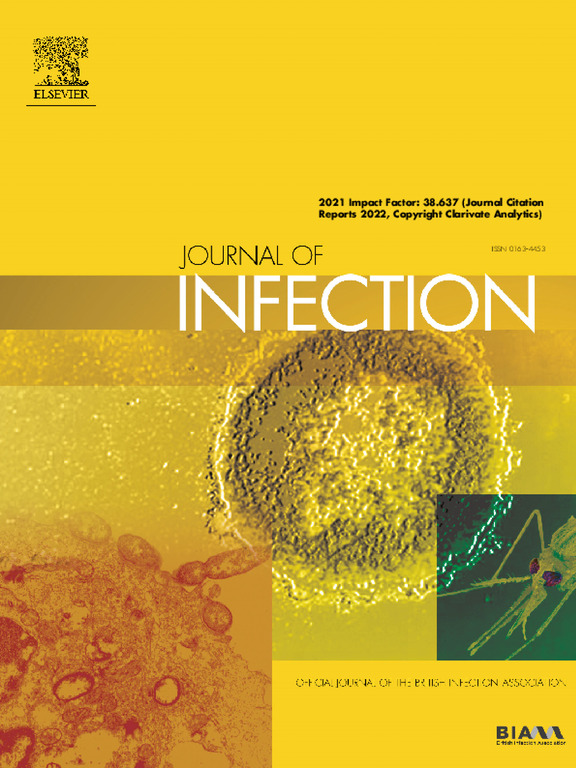少急,多快:延迟的血培养负荷会导致不良的培养时间或产量吗?
IF 11.9
1区 医学
Q1 INFECTIOUS DISEASES
引用次数: 0
摘要
背景:血培养仍然是急性不适患者的重要诊断工具。英国微生物学调查标准(SMI)规定了旨在提高产量和减少周转时间的分析前要求。要求在4小时内将血液培养物装载到机器上已被证明可以减少周转时间,但关于它是否能提高产量的证据有限。方法:提取英国西南部4家医院的血培养结果,包括生物生长情况、检测时间、地点和标本采集时间。然后,我们使用混合效应,贝叶斯线性和逻辑回归模型来检查预测变量,如到实验室时间(TTL)和发送时间对生长或检测时间的响应变量的影响。我们拟合了广义加性模型来探讨非线性。结果:共分析了449,191组培养物,其中398,077组有足够的数据纳入最终分析。37255组阳性(9.36%),其中21330组被认为是病原体。我们的初步分析发现,每延迟加载一个小时,产量就会小幅下降(0.997 (95%CrI 0.994 - 1.00 1))。这种作用在肺炎链球菌、无乳链球菌和化脓菌中最大。在我们对机器时间的分析中,每延迟一个小时,培养组在培养箱上的花费就会减少10.03 (95%CrI 12.66 - 7.31)分钟。无论是厌氧菌还是酵母菌,都没有因为TTL的增加而丧失恢复能力。这两种效应都没有令人信服的非线性。结论:血培养每一小时未孵育就有轻微的生长损失,其中最常见的是化脓性链球菌和其他链球菌的恢复损失。没有证据表明革兰氏阴性菌、厌氧菌或酵母菌减少。对于延迟集,检测时间略有减少。这一分析表明,减少加载时间可能会带来边际效益。本文章由计算机程序翻译,如有差异,请以英文原文为准。
Less haste, more speed: Does delayed blood culture transport time lead to adverse incubation times or yield?
Background
Blood culture remains a vital diagnostic tool in the acutely unwell patient. The UK Standards for Microbiology Investigations (SMI) stipulate pre-analytical requirements that are aimed at increasing yield and reducing turnaround time. The requirement to load blood cultures on machines within 4 h has been shown to reduce turnaround time but limited evidence exists as to whether it improves yield.
Methods
We extracted blood culture results, including organism growth, time to detection, location and time of sample collection from 4 hospitals in Southwest England. We then used mixed effects, Bayesian linear and logistic regression models to examine the effect of predictor variables like time to laboratory (TTL) and sent time on the response variable of growth or time to detection. We fitted generalised additive models to explore non-linearity.
Results
449,191 culture sets were analysed, 398,077 of which had enough data to include in the final analysis. 37,255 sets flagged positive (9.36%) of which 21,330 were considered pathogens. Our primary analysis identified a small decrease in yield with each hours delay in loading (0.997 (95%CrI 0.994–1.001)). This effect was largest in Streptococcus pneumoniae, agalactiae and pyogenes. In our analysis on time on the machine, culture sets spend 10.03 (95%CrI 12.66–7.31) minutes less on incubators for each hour delay. Neither anaerobes nor yeasts showed any loss of recovery from increasing TTL. There was no convincing non-linearity in either of these effects.
Conclusion
There is a marginal loss of growth for every hour a blood culture is left unincubated, with the loss of recovery of Streptococcus pyogenes and other streptococci being most common. There was no evidence of a reduction in Gram-negatives, anaerobes, or yeasts. There was a small decrease in time to detection for delayed sets. This analysis suggests there may be marginal benefit in reducing time to load.
求助全文
通过发布文献求助,成功后即可免费获取论文全文。
去求助
来源期刊

Journal of Infection
医学-传染病学
CiteScore
45.90
自引率
3.20%
发文量
475
审稿时长
16 days
期刊介绍:
The Journal of Infection publishes original papers on all aspects of infection - clinical, microbiological and epidemiological. The Journal seeks to bring together knowledge from all specialties involved in infection research and clinical practice, and present the best work in the ever-changing field of infection.
Each issue brings you Editorials that describe current or controversial topics of interest, high quality Reviews to keep you in touch with the latest developments in specific fields of interest, an Epidemiology section reporting studies in the hospital and the general community, and a lively correspondence section.
 求助内容:
求助内容: 应助结果提醒方式:
应助结果提醒方式:


